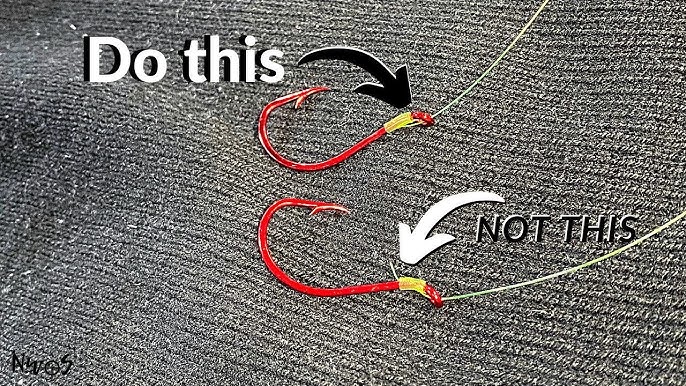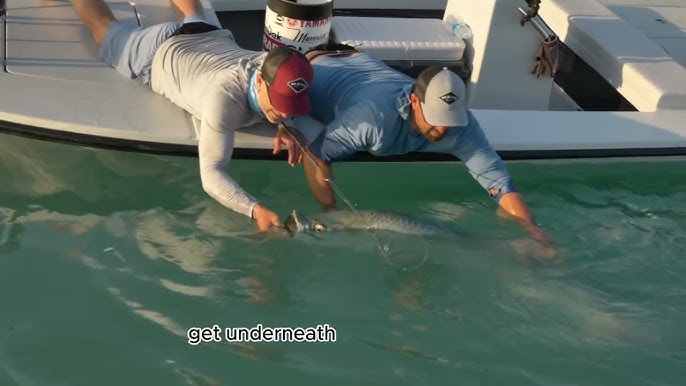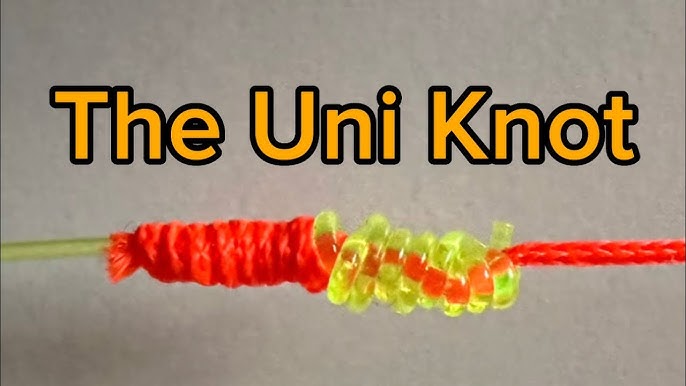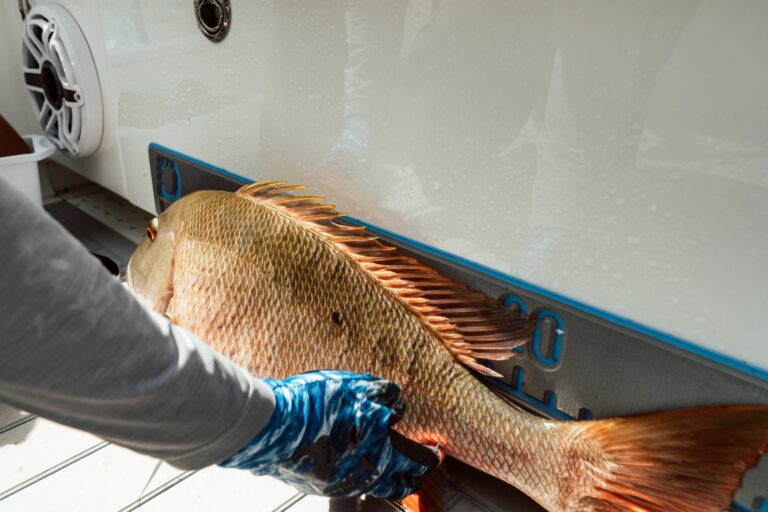How to Master Boat Trimming in Choppy Waters: 7 Expert Tips
To trim a boat in choppy water, adjust the trim tabs or use the trim control to lower the bow. In choppy water, it is important to have the right trim to maintain stability and control.
Trimming a boat in choppy water is essential for maintaining stability and control. Whether you’re a seasoned boater or a beginner, understanding how to properly trim your boat can make all the difference in rough water conditions. By adjusting the trim tabs or using the trim control, you can lower the bow and improve the boat’s performance.
We will explore some effective techniques for trimming a boat in choppy water, ensuring a safer and smoother ride. So, let’s dive in and discover the key steps to achieving optimal trim in challenging conditions.
Understanding Boat Trimming And Its Importance
When it comes to navigating choppy waters, understanding boat trimming becomes even more crucial to ensure a safe and enjoyable experience. Proper boat trimming involves adjusting the distribution of weight and positioning of various elements on the boat to maintain stability and optimize performance.
Importance Of Boat Trimming In Choppy Waters
Trimming your boat correctly in choppy waters can make all the difference between a smooth ride and a rough, unstable journey. Here’s why boat trimming is of utmost importance:
- Improved Stability: By correctly adjusting the trim of your boat, you can enhance stability, minimizing the chances of getting tossed around by the waves. A properly trimmed boat reacts better to the waves, maintaining balance and reducing the risk of capsizing.
- Enhanced Performance: Proper boat trimming leads to better performance in choppy waters. When your boat is trimmed correctly, it maintains its efficiency and speed, allowing for better control, maneuverability, and the ability to navigate through the waves more effectively.
- Reduced Fuel Consumption: Maintaining the correct trim helps in reducing fuel consumption. A well-trimmed boat has less resistance when cutting through the waves, which means it requires less power to maintain its speed. This not only saves fuel but also extends the overall range of your boat.
- Comfortable Experience: A properly trimmed boat provides a more comfortable experience for you and your passengers. By keeping the bow down, you can reduce the pounding effect caused by waves, resulting in a smoother ride and minimizing discomfort caused by excessive bouncing.
The Role Of Boat Trimming On Stability And Performance
Boat trimming plays a significant role in both stability and performance, and understanding how it affects these aspects is crucial. Let’s take a closer look:
Stability:
Proper boat trimming affects stability by influencing the boat’s center of gravity. By adjusting the weight distribution fore and aft, you can achieve a balance that allows the boat to ride smoothly through choppy waters. If the bow is too high, it can cause the boat to nosedive into waves, increasing the chances of a dangerous situation. On the other hand, if the bow is too low, the boat may become sluggish and less responsive to the waves.
Performance:
Boat trimming also plays a crucial role in optimizing performance. By achieving the correct trim, you can ensure that the boat’s hull design works harmoniously with the water, reducing drag and increasing efficiency. This allows the boat to maintain its speed, maneuverability, and responsiveness, even in challenging conditions.
In conclusion, understanding boat trimming and its importance is vital when navigating choppy waters. By properly adjusting the trim of your boat, you can enhance stability, improve performance, save fuel, and provide a more comfortable experience for both you and your passengers.
Assessing Wind And Wave Conditions
Before setting sail in choppy water, it’s essential to assess the wind and wave conditions. Failure to do so can lead to a challenging and potentially dangerous boating experience. By accurately identifying wind direction and strength as well as evaluating wave patterns and heights, you can make informed decisions about how to trim your boat for a smoother ride. Let’s take a closer look at each aspect:
Identifying Wind Direction And Strength
Properly identifying wind direction and strength is crucial when trimming a boat in choppy water. The wind affects your boat’s balance and stability, so understanding its direction is key to adjusting your sails or maneuvering your motor properly. Here are some key points to remember:
- Use a wind vane or windsock to determine wind direction accurately. Place it in a high, unobstructed area on your boat for the best results.
- Pay attention to any flags onshore or buoys in the water that can indicate wind direction.
- The Beaufort Scale can be a useful reference for assessing wind strength. It provides a standardized measure ranging from calm conditions (0 on the scale) to hurricane-force winds (12 on the scale).
Evaluating Wave Patterns And Heights
Assessing wave patterns and heights is equally important when trimming a boat in choppy water. Waves can significantly impact your vessel’s stability, speed, and overall performance. Here’s what you need to know:
- Observe the shape and spacing of the waves. Look for patterns to determine whether the waves are regular or irregular.
- Consider the height of the waves. Measure from the trough (bottom) to the crest (top) to determine the wave’s height. Use nearby markers or landmarks as references.
- Consult weather reports or local resources for wave forecasts and conditions specific to your boating area. Pay attention to any warnings or advisories issued.
Remember, being aware of wind direction and strength as well as wave patterns and heights is crucial to effectively trim your boat in choppy water. Proper assessment allows you to make adjustments to your sails, adjust your trim tabs, or shift your weight distribution, ensuring a safer and more enjoyable boating experience.
Adjusting Weight Distribution For Optimal Trimming
Adjusting Weight Distribution for Optimal Trimming When it comes to navigating a boat through choppy waters, one of the most critical aspects is achieving the right trim. Proper trimming ensures the boat remains stable, improves fuel efficiency, and enhances overall performance. One key factor in achieving optimal trimming is adjusting weight distribution. This involves balancing weight fore and aft as well as ensuring even weight distribution from side to side.Balancing Weight Fore And Aft
Maintaining a balanced weight distribution between the front and rear of the boat is crucial for achieving optimal trimming. When the weight is unevenly distributed, the boat may become unstable or prone to pitching, making it more difficult to maneuver through choppy waters. To maintain balance, ensure that heavy items such as anchors, batteries, or fuel tanks are evenly distributed fore and aft. Distributing weight evenly will help keep the boat level and improve its ability to cut through waves smoothly.Ensuring Even Weight Distribution From Side To Side
Another essential aspect of weight distribution is ensuring that the load is evenly distributed from side to side. Uneven weight distribution can cause the boat to lean or list, affecting stability and making it harder to maintain control. To achieve even weight distribution, take into account any equipment, passengers, or cargo on board. If possible, position heavy items symmetrically on both sides of the boat. Regularly check for any imbalances and make adjustments as necessary to maintain an even weight distribution.| Left Side | Right Side |
|---|---|
| Passenger 1 | Passenger 2 |
| Equipment A | Equipment B |
| Fuel Tank 1 | Fuel Tank 2 |
- Regularly check weight distribution
- Visually inspect the boat
- Use a leveling tool
- Make minor adjustments as needed
Fine-tuning Trimming With Trim Tabs And Rudders
When navigating choppy waters, it’s crucial to have full control over your boat’s trim to ensure stability and optimal performance. While adjusting your engine tilt and trim angle can help to some extent, fine-tuning your boat’s trimming is best achieved by utilizing trim tabs and rudders. These components play a vital role in adjusting the balance and pitch of your boat, allowing you to maintain control even in challenging conditions. Here, we will take a closer look at the purpose and function of trim tabs and rudders, as well as how to adjust them for optimal boat trimming.
Understanding The Purpose And Function Of Trim Tabs And Rudders
Trim tabs and rudders are two distinct components that work in harmony to help you achieve the desired trim for your boat. Trim tabs are located on the stern or transom of the boat and can be adjusted independently. They consist of small metal plates that can be raised or lowered to control the vertical balance of the boat. By raising or lowering these tabs, you can compensate for weight distribution or environmental factors, such as wind or wave conditions.
Rudders, on the other hand, are part of the boat’s steering system, typically located at the stern. While their primary function is to steer the boat, they can also contribute to trim adjustment. By turning the rudder, you can change the lateral balance and pitch of the boat, allowing for better control and stability.
Adjusting Trim Tabs And Rudders To Optimize Boat Trimming
Now that we understand the purpose and function of trim tabs and rudders, let’s dive into how we can adjust them to optimize boat trimming. Here are some key steps to follow:
- Identify the need for adjustment: It’s important to first assess the trim of your boat in choppy water and determine if any adjustments are necessary. Look out for signs of instability, such as porpoising or excessive bow rise.
- Adjusting trim tabs: Start by adjusting the trim tabs. Lower the tabs slightly if the bow is riding too high, or raise them if the bow is plowing through the water. Make small adjustments and observe their effect on the boat’s trim, ensuring a balanced and stable ride.
- Using rudders for fine-tuning: If further trim adjustment is required, the rudders can be used to fine-tune the boat’s balance. By turning the rudder slightly, you can control lateral movement and reduce any side-to-side rolling.
- Testing and refining: After making adjustments, it’s important to test your boat’s new trim settings and refine them if needed. Take note of how the boat responds to different settings and make incremental changes accordingly.
Remember, every boat is unique, and the optimal trim settings may vary depending on factors such as weight distribution, hull design, and sea conditions. It’s essential to experiment and find the right balance that suits your specific boat. With practice and fine-tuning, you’ll be able to confidently navigate choppy waters while maintaining stability and control.
Using Power And Speed To Control Trimming
Utilizing Engine Power To Control Trimming
When it comes to trimming your boat in choppy waters, one of the most effective techniques is to utilize the power of your engine. By adjusting the trim of your boat’s motor, you can manipulate the angle at which your boat rides through the waves, ensuring a smoother and more comfortable experience for you and your passengers.
To begin, it’s important to understand that trimming the engine up or down affects the bow and stern of your boat. By raising the engine or tilting it upward, you can create a better angle for cutting through choppy waters. Conversely, if you lower the engine or tilt it downward, you can enhance stability and control in rough conditions.
When you encounter choppy water, it’s recommended to trim the engine so that the bow is slightly elevated. This allows the boat to ride over the waves rather than plowing through them. By riding over the waves, you can reduce the impact on the boat, minimize bouncing, and maintain a smoother ride for everyone on board.
Adjusting Speed To Counteract Choppy Waters
Speed is another crucial factor in controlling trimming when navigating choppy waters. It’s important to adjust your speed accordingly to counteract the rough conditions and maintain optimal control of your boat.
When the water is choppy, it’s generally best to slow down and maintain a steady pace. Driving too fast in these conditions can result in an uncomfortable and potentially dangerous ride. Slowing down allows your boat to better respond to the waves, increasing stability and reducing the risk of getting swamped or losing control.
However, it’s important to note that going too slow can also be detrimental. Maintaining a moderate speed ensures that your boat can effectively cut through the waves, rather than being heavily influenced by them. It’s a delicate balance, and finding the right speed may require some trial and error.
As a general rule, it’s recommended to adjust your speed based on the size and frequency of the waves. Larger waves may require a slower speed to prevent getting caught in their troughs, while smaller waves might allow for a slightly faster pace. Paying close attention to the conditions and making adjustments as necessary will help you maintain control and optimize trimming in choppy waters.
The Art Of Reading The Water For Effective Trimming
One of the most critical skills every boat captain or enthusiast must possess is the ability to read the water effectively. When it comes to trimming a boat in choppy water, having the art of reading the water at your disposal can make all the difference. By identifying wave patterns and irregularities, as well as anticipating and adjusting trimming to accommodate changing water conditions, you can ensure a smoother and more comfortable ride. In this article, we will explore these essential aspects of reading the water for effective trimming.
H3identifying Wave Patterns And Irregularities/h3
Before you can effectively trim your boat to navigate choppy waters, it is vital to develop the skill of identifying wave patterns and irregularities. By doing so, you can gather valuable information that will help you make the necessary adjustments to your vessel’s trim and stability. Here are some key factors to consider:
- Observe the frequency and height of the waves in your surroundings. Note whether they are consistent or vary
- Pay attention to any irregular or rogue waves that may appear unexpectedly, as they can significantly impact your boat’s stability
- Take note of the direction from which the waves are coming. Is it directly head-on or at an angle?
By understanding these wave patterns and irregularities, you can gain valuable insights into how your boat will respond as you navigate through choppy waters.
H3anticipating And Adjusting Trimming To Accommodate Changing Water Conditions/h3
While identifying wave patterns is crucial, being able to anticipate and adjust your boat’s trim is equally essential to maintain stability in choppy water. Adaptability is key, and here are some strategies to help you:
- Regularly monitor and assess the changing water conditions, remaining vigilant to any shifts in wave height, direction, or frequency
- Maintain a proactive approach by making trim adjustments in advance. As you anticipate changes in the water conditions, you can pre-emptively adjust your trim to ensure a smoother ride
- Take advantage of trim tabs or adjustable outboard motor brackets to fine-tune your boat’s trim settings. These features allow you to make precise adjustments to compensate for changing water conditions
By combining your ability to read the water with proactive trim adjustments, you can effectively navigate choppy waters and experience a more comfortable and controlled ride.
Safety Precautions And Best Practices For Boat Trimming
When it comes to boating in choppy waters, safety should always be a top priority. Properly trimming your boat is essential for maintaining stability, control, and minimizing risk. By following these safety precautions and best practices, you can ensure a safe and enjoyable boating experience even in challenging conditions.
Wearing Appropriate Safety Gear
Before hitting the water, it’s crucial to wear the appropriate safety gear to protect yourself and your crew. Here are some key items you should always have on board:
- Life jackets for all passengers
- Throwable flotation devices
- Flares or other visual distress signals
- A marine radio or communication device
- A fully stocked first aid kit
Understanding The Limits Of Boat And Crew In Choppy Waters
Every boat and crew have their limits, and it’s vital to understand them before venturing out into choppy waters. Consider factors like the size and weight of your boat, engine power, and the experience level of your crew members. Knowing these limitations will help you make informed decisions and avoid putting yourself and others at risk.
It’s also essential to familiarize yourself with the capabilities of your boat and how it handles in rough conditions. This knowledge will allow you to adjust trim settings accordingly and maintain stability.
Remember, if the conditions become too hazardous, it’s better to err on the side of caution and find shelter until the weather improves.
Now that you’re aware of these safety precautions and best practices, you can confidently trim your boat in choppy waters. By wearing appropriate safety gear and understanding the limits of your boat and crew, you’ll be well-prepared to navigate through challenging conditions. Stay safe, have fun, and enjoy your boating adventures!
Conclusion
To successfully trim a boat in choppy water, it is essential to understand the importance of weight distribution and the impact it has on stability and maneuverability. By making small adjustments to the trim tabs or the outdrive position, you can effectively keep your boat balanced and maintain control even in challenging conditions.
Remember to constantly monitor the water conditions and adjust as necessary to ensure a safe and enjoyable boating experience. Happy boating!





